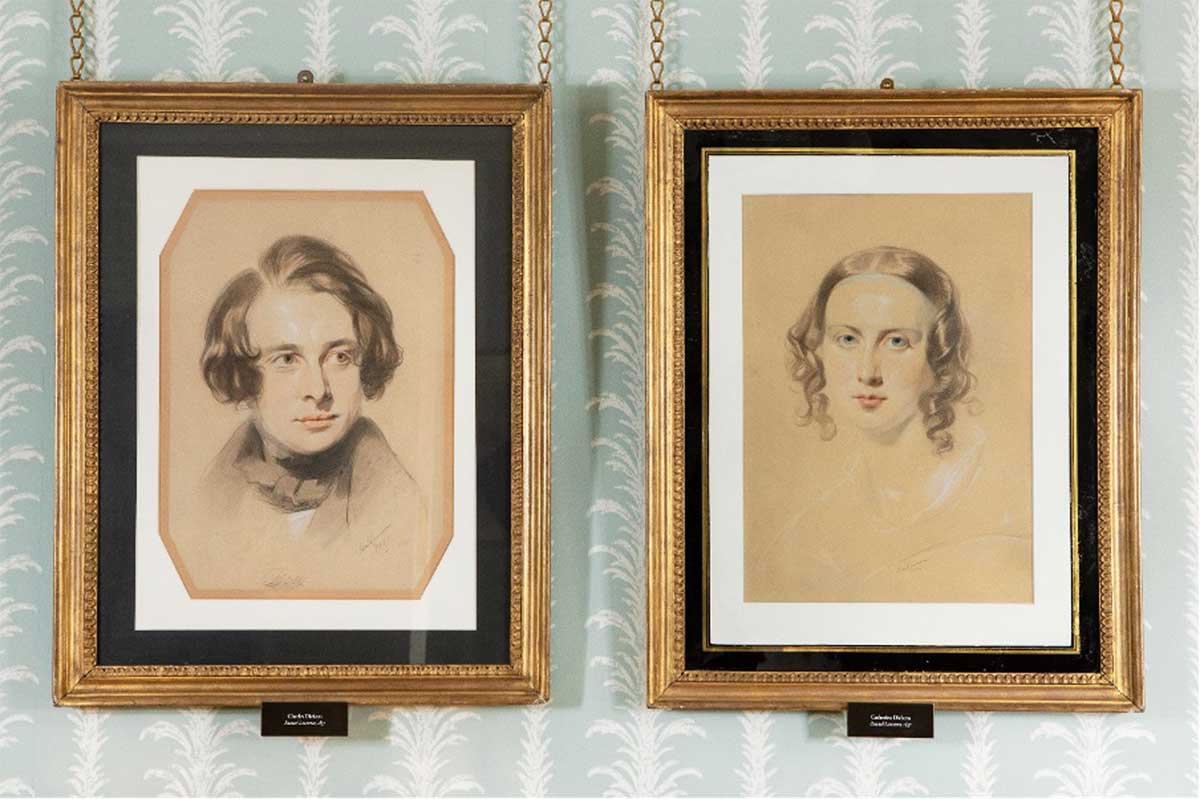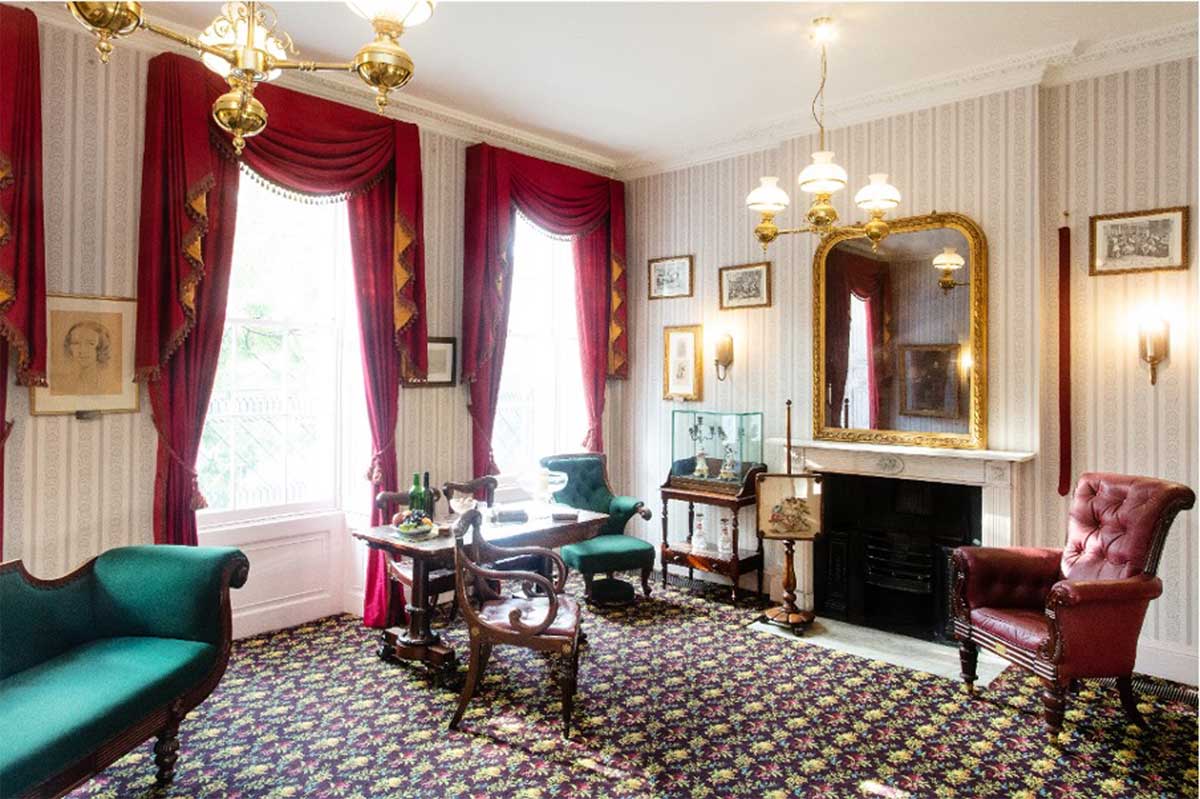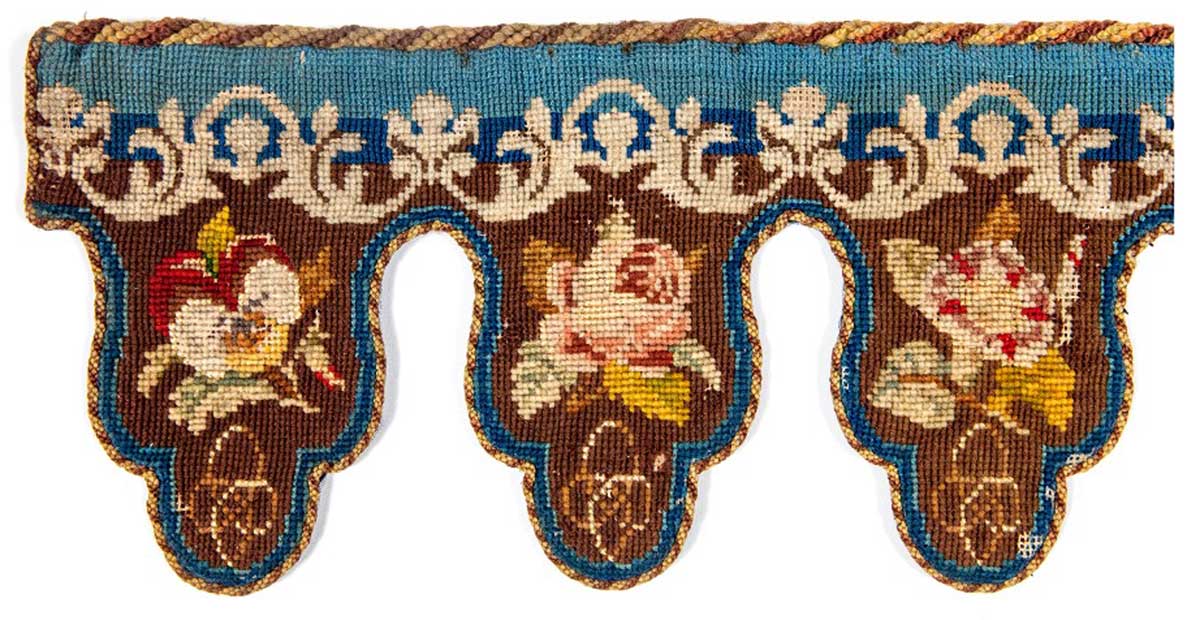I’m Emma Treleaven, and until recently I was the assistant curator at the Charles Dickens Museum. Normally, my job was a mix of taking care of the museum’s historic house, collections, library, and archive, as well as running research appointments, answering enquiries, and helping out with the museum’s social media. Some days I did all the chores a housemaid would have done when Charles Dickens lived in the house, like sweeping out the fireplaces and dusting, which today we call collections care. Caring for a historic house and its collections is a really busy job, and no two days or challenges are the same. Nevertheless, caring for the historic interiors of 48 Doughty Street became one of my favourite parts of my job at the museum.
The Charles Dickens Museum is housed in 48 and 49 Doughty Street in Bloomsbury in London. Dickens moved into 48 Doughty Street with his family in 1837, renting the property for the middle-class sum of £80 a year. He took up residence with his wife Catherine and their baby son Charley in what he called ‘his house in town’ (Fig. 1). Dickens was only twenty-five at the time, and this house is where he really cemented his celebrity and success. 48 Doughty Street is where he finished writing Pickwick Papers (published as a serial 1836–37) and where he wrote Oliver Twist (published as a serial 1837–39) and Nicholas Nickleby (published as a serial 1838–39), the novels that made him famous and enabled him to afford such a middle-class home.
Charles and Catherine had two more children while living at Doughty Street, and as the Dickens family grew so did Charles’s fame and income. In 1839 he took out a lease at 1 Devonshire Terrace in Marylebone, and the family moved into progressively larger houses until Dickens eventually purchased Gad’s Hill Place in Kent.
After the Dickens family moved on, 48 Doughty Street had many other tenants and owners. In the 1920s the property went up for sale and was purchased by the Dickens Fellowship, a non-academic group dedicated to the appreciation and legacy of Charles Dickens. The fellowship opened 48 Doughty Street as a museum and library in 1925, and in 2012 the museum underwent a massive redevelopment which saw it restored to a historic home and up-to-date museum.
While many parts of the museum are authentically early Victorian, the house is not a perfect replica of what it would have been like when the Dickenses lived there. This is the case for quite a few reasons. Firstly, many people lived in the house before and after the Dickenses. These residents did what all of us do to make a space our own, so we do not know how these spaces were decorated when Charles and Catherine moved in, or the nature of the alterations made by the Dickens family to turn 48 Doughty Street into their home.
The other complicated aspect of interpreting a historic house as a museum is that the collections cover Dickens’s whole life from 1812 to 1870, and not just the period during which he lived there. It would be amazing to know exactly how Doughty Street was furnished and decorated by the Dickenses, and the museum collection does have a few pieces that we know he bought before or during his time at Doughty Street, but most of the furniture on display is from later in his life. This means that the reconstructed interiors of the museum, like many historic homes, represent a mix between an educated, researched guess and a microcosm of Dickens’s whole life. This is even further complicated by the period the Dickenses lived in the house. There is little research about interiors in the very early Victorian era, which was a period of cultural, political, and technological change. Wallpaper printing, for example, was just beginning to be mechanized, and we have no idea if Dickens would have chosen hand- or machine-printed paper for Doughty Street’s walls.
Most is known about the drawing room (Fig. 2). We know that Dickens asked for the room and ceiling to be repainted and blinds to be fitted on the windows before he and his family moved in. We also know he had a carpet fitted, which was new and fashionable at the time as carpet manufacture had only recently been mechanized enough to become affordable. From paint scrapings, letters, and tenancy agreements, we know the woodwork was painted pink and the rest of the room was papered. The drawing room is the only room in Doughty Street for which this level of detail is available, but using information about the family and later homes, educated guesses can be made about what the other rooms were like.
Dickens was very fashionable, and conscious of his status. Throughout his life he made improvements to his homes that ensured they contained cutting-edge technology, such as gaslighting, and the latest interior fashions with which to impress guests, such as the fitted carpet in the drawing room. This care for his domestic environment was quite unusual for a man at the time. Usually, these things would be left to the female head of the house, but it is known from letters, contemporary accounts, and even his own household accounting books that he liked to be involved in everything from the cleaning of his homes to the upholstery on his chairs.
Helpfully, there is an inventory of all the contents of Devonshire Terrace, Dickens’s home for the five years after he left Doughty Street, which gives some indication of the style and possible contents of Doughty Street itself. It is also known that Catherine Dickens was a skilled needlewoman and that she made home decor objects like mantel pelmets and cushions, so any of her homes would have been filled with bright, handmade objects (Fig. 3).
The museum holds some key pieces of furniture from when Dickens lived at Gad’s Hill Place, including his desk and chair. This is where he wrote novels like A Tale of Two Cities (1851) and Great Expectations (1861), as well as much of his later journalism. While he purchased this desk and chair many years after living at Doughty Street, today they are displayed in the study in the museum, where he likely would have had a desk when he lived in the house.
In addition to their important association with Dickens, these pieces of furniture are quite special because they have been the subject of multiple commemorative artworks made after Dickens’s death, like the drawing The Empty Chair (1870) by Luke Fildes. From this, and other artworks like Robert Buss’s Dickens’s Dream (1875), we can see exactly how the pieces fit into Dickens’s study, and how he left them when he died with The Mystery of Edwin Drood (partially serialized in 1870) still unfinished.
Research is currently being carried out at the museum which, hopefully, will help to bring the house even closer to how it was when Dickens lived there. For example, new research has shown how the kitchen, preparation room, scullery, and washhouse were originally arranged, and later additions to these areas have been identified. There is also ongoing research into the wallpapers, paints, and floor coverings Dickens would have had in the house. This will potentially lead to the period spaces being redecorated, and thus becoming more accurate reconstructions of how they would have appeared in the period 1837 to 1839.
As with the rest of the world, Covid-19 has drastically changed the Charles Dickens Museum and our roles as curators within it. When the museum closed to the public in mid-March 2020, as an independent museum with no regular government support we lost our entire income. Almost all of the staff were put on furlough in the hopes that the savings would help us survive until we could find financial support or welcome our visitors back.
From a curatorial perspective, the closure and furlough were terrifying. We spend our careers, if not our lives, lovingly and carefully caring for our objects, archives, libraries, and buildings. The prospect of having to abandon them to the possibility of intruders and vandals and, even worse, pests, leaks, and light damage, was horrifying. This, combined with the inability to share collections with the public — the main purpose of our institution — left many staff feeling at a loss.
The curatorial team at the museum were put on furlough on rotation, so one of us would be in, a week at a time, to carry out the necessary collections care. Just because there are no visitors does not mean moths have not tried to snack on the curtains or that Dickens’s desk does not need careful dusting. I, for one, was very grateful for these tasks; they brought some structure and normality to the world when everything else was complicated and scary.
Being in the museum in the months it was closed was a strange experience. 48 Doughty Street is dressed as a home — wallpaper, carpets, and all — but when you have up to a few hundred visitors a day exploring it, the building loses some of its intimacy. During our closure periods, it felt like the Dickens family and their staff had just stepped out of the room. It was amazingly quiet — you could hear the hall clock chime through the whole house — and I loved watching how the sun travelled around the different rooms. It made the house really feel like a home.
Losing our visitors could have meant financial disaster, but the museum’s director, Cindy Sughrue, did an amazing job navigating through all the uncertainty and successfully applying for multiple grants. The museum is the recipient of financial help from various sources, including the Culture Recovery Fund and fundraising efforts from the Dickens community. Once the museum was on a surer footing, the curatorial team was able to return and tackle one of the greatest challenges facing the museum sector: if the visitors cannot come to you, how do you go to the visitors? While still keeping up our normal work as carers for the collection, we created an array of ways visitors could engage with the museum from their own homes, including online events, and we expanded our digital collections. We really pushed ourselves to expand what we could do for people and it was exciting to be able to reach visitors across the world virtually for the first time.
Working as a curator of a museum collection during a pandemic is a challenge I hope never to face again, but I am grateful for how the industry has rallied and adapted and how we have supported each other. I am grateful for amazing colleagues that made me laugh on dark days, and who care about their jobs as much as I do mine. I am grateful that I was able to experience and care for a place as special as the Charles Dickens Museum, and to support such an important place in such a difficult time.
The museum is due to reopen in mid-May 2021 and I really encourage anyone who can visit safely at that time to do so. It is an incredibly special place.



